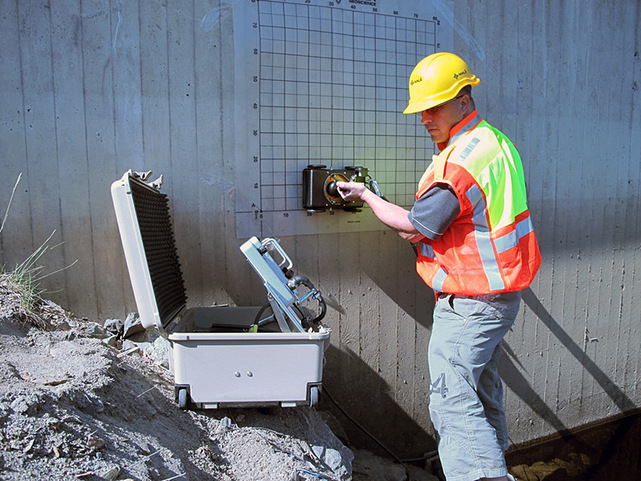Past the Surface: Leveraging Advanced Concrete Scanning Techniques for Unmatched Accuracy and Understanding
In the world of building and facilities maintenance, the quest for precision and thoroughness is incessant. Advanced concrete scanning techniques have actually emerged as vital devices in this pursuit, supplying a peek beneath the surface area to unveil a globe of vital insights. By using cutting-edge modern technologies, experts can reveal anomalies, analyze the condition of concrete frameworks, and make notified choices that shape the program of tasks. The ramifications of these techniques prolong much beyond plain surface-level assessments, assuring a depth of precision and understanding that is unequaled.
Importance of Advanced Concrete Scanning
The significance of using advanced concrete scanning strategies lies in the unmatched accuracy they supply for discovering sub-surface abnormalities and making certain structural stability. By utilizing innovative modern technologies such as ground-penetrating radar (GPR), electro-magnetic induction, and progressed finder imaging, construction professionals can delve beneath the surface area of concrete frameworks with a degree of precision that much goes beyond traditional inspection methods. Concrete Scanning. These techniques enable the recognition of hidden hazards like rebar corrosion, voids, avenues, or post-tension cords that might endanger the security and safety and security of a framework over time
Additionally, advanced concrete scanning gives invaluable understandings into the overall problem of a concrete element without the requirement for invasive steps, minimizing the risk of triggering damage during the evaluation procedure. The capacity to determine the exact area and deepness of potential concerns allows for targeted fixings and maintenance, eventually prolonging the lifespan of the structure and enhancing its performance. Fundamentally, the significance of sophisticated concrete scanning can not be overstated in the world of building and facilities maintenance, where precision and dependability are extremely important.
Sorts Of Cutting-Edge Technologies

Anomalies and Defect Discovery

In addition to GPR, concrete scanning methods like thermography and impact-echo screening are likewise efficient in finding problems and abnormalities. By leveraging these advanced strategies, experts can proactively deal with architectural problems, ensuring the long life and safety and security of concrete structures.
Assessing Concrete Condition
Exactly how can engineers precisely review the condition of concrete structures to guarantee their longevity and safety and security? Analyzing the concrete condition is a vital find more aspect of keeping facilities integrity. Numerous sophisticated concrete scanning techniques are used for this function. Ground-penetrating radar (GPR) is generally made use of to evaluate the inner structure of concrete, detecting spaces, cracks, and other abnormalities that may endanger its stamina. In addition, impact-echo testing can give insights right into the thickness and stability of concrete components. Ultrasonic pulse speed screening is one more valuable technique for assessing concrete top quality by determining the speed of sound waves through the product.
Additionally, aesthetic examination remains a fundamental part of concrete condition evaluation. Designers aesthetically check out the surface area for signs of wear and tear, such as spalling, splitting, or staining. Incorporating non-destructive screening approaches with visual evaluations enables for a comprehensive assessment of concrete problem, making it possible for engineers to determine possible concerns early on and execute prompt upkeep or repairs. By leveraging these advanced techniques, engineers can guarantee the long-lasting longevity and safety and security of concrete frameworks.
Enhancing Decision-Making Procedures
In the other world of facilities management, optimizing decision-making procedures is imperative for ensuring the effective maintenance and long life of concrete frameworks. Boosted decision-making procedures in concrete administration include utilizing innovative scanning methods to gather thorough information on the condition of structures. By leveraging modern technologies such as ground-penetrating radar and 3D imaging, stakeholders can make informed decisions regarding replacement, repair, or reinforcement techniques.
These progressed scanning techniques give indispensable insights into the internal make-up of concrete, determining potential concerns such as voids, cracks, or rust that might not be noticeable on the surface. This level of detailed details allows for positive upkeep preparation, reducing the danger of architectural failures and enhancing the general lifespan of concrete frameworks.
Furthermore, by integrating digital paperwork and evaluation tools into the decision-making process, stakeholders can track the development of concrete conditions in time, allowing predictive maintenance techniques and enhancing resource allotment. Ultimately, the integration of advanced concrete scanning techniques enhances decision-making procedures by giving unparalleled precision, understanding, and effectiveness in facilities administration.
Final Thought
To conclude, advanced concrete scanning strategies offer unequaled precision and understanding in finding abnormalities, defects, and assessing the condition of concrete structures. By leveraging innovative innovations, decision-making procedures can be boosted, bring about even more efficient and educated services for preserving and fixing concrete infrastructure. These techniques play a vital duty in making sure the look at this now safety and security and long life of concrete frameworks, making them a crucial device in the field of construction and engineering.
In addition, progressed concrete scanning supplies indispensable understandings right into the general condition of a concrete component without the requirement for invasive steps, reducing the risk of creating damage throughout the analysis process - Concrete Scanning. Another ingenious technology is 3D X-ray scanning, which supplies comprehensive photos of the internal framework of concrete, providing valuable info without the need for harmful testing. In Addition, Concrete Cover Meters are used to determine the density of concrete cover over reinforcement bars precisely. Boosted decision-making processes in concrete administration involve utilizing sophisticated scanning strategies to gather in-depth information on the condition of structures.In verdict, progressed concrete scanning techniques use unequaled precision and insight in finding anomalies, problems, and assessing the problem of concrete structures